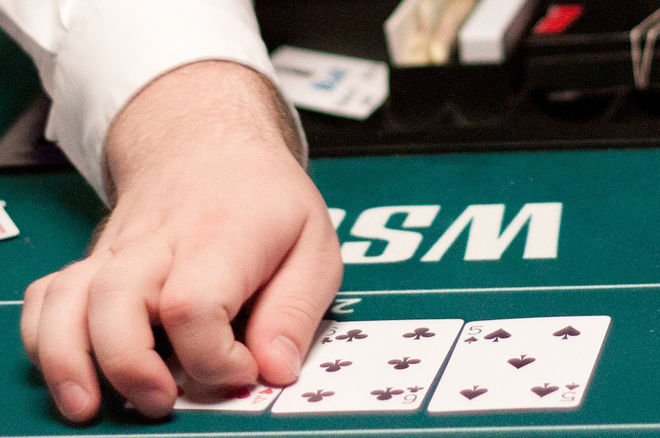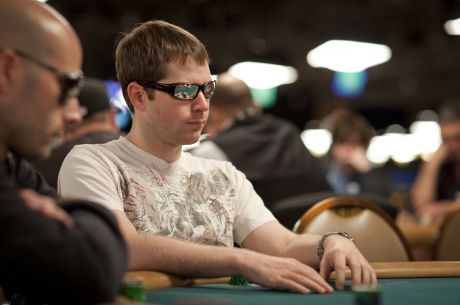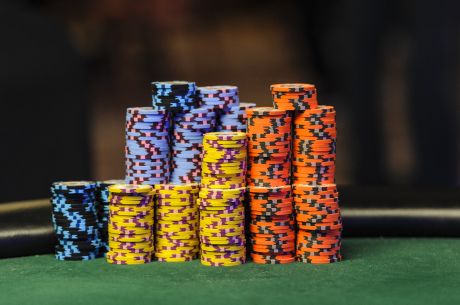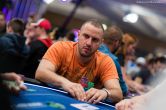Evaluating Different Types of Flops in No-Limit Hold'em

Most no-limit hold'em players — even those who are just starting out — tend to get familiar with the relative strength of starting hands quickly. It's usually trial and error that helps us begin early on to start grouping hands into certain categories of value — e.g., "great," "good," "so-so," and "bad."
From there we begin developing our preflop strategy to the point at which we start taking into account the importance of position, too, to help us figure out when and with what hands we should be folding, calling, betting, or raising before the flop.
For those starting hands with which we end up seeing a flop, then, the next step involves learning how to recognize and rate good and bad flops — not just for our hand (normally not difficult to establish), but also for our opponents' hands. Such evaluations depend on (1) what range of hands our opponents are likely to hold given the preflop action, and (2) how the first three community cards interact with that range.
Moving from Preflop to the Flop
Play long enough and you start to realize how flops — like starting hands — can also be grouped according to how relatively "good" or "bad" they are for players who've performed certain actions before the flop. This grouping tendency in part has to do with how the human brain works.
Instead of trying to remember and rank 169 different starting hands in hold'em, for example, we create easier-to-manage groups — say four or five or even eight of them (but usually not more than that). In psychology, the concept of "chunking" is sometimes used to explain this tendency, an idea that historically was first associated with short-term memory, but more recently has been considered as relevant to long-term memory, too.
The same eventually happens with the way we evaluate flops. It never occurs to us to try ranking the 19,600 different possible flops (the number of three-card combinations that can be made from the 50 unknown cards) — our brains can't go there. Rather, we instinctively recognize whether a flop is great or good or so-so or bad for us, estimate whether or not it is great or good or so-so or bad for opponents, and proceed accordingly.
Actually, with flops this grouping tendency is a two-step process — first we recognize what category the flop falls into in a generic sense, then we put the flop into one of those "great," "good," "so-so," or "bad" boxes for both our own hand and the range of hands we give to our opponents. For that reason, it is helpful to be aware of certain, generic flop categories and how they frequently tend to "rank" (on that great/good/so-so/bad scale) for both the preflop aggressor and the preflop caller.
Let's imagine a player who opens with a raise from early or middle position. Such a player typically represents a relatively strong range of starting hands, say only the top 15-20%. Such a range could include pocket pairs, suited aces, unsuited aces down to ace-jack, suited connectors, suited one-gappers down to 7x5x or so, suited two-gappers down to Jx8x, and king-queen offsuit.
Now imagine a second player in the blinds defending with a call. In most cases that player's range will overlap somewhat with the raiser's range, minus the premium hands with which most would reraise. Meanwhile replacing those hands might be a few more combos containing middle-range cards (jack through seven), most of which will be suited with some unsuited connectors thrown in as well.
In other words, the preflop raiser is representing hands that are relatively strong while the caller is representing a somewhat weaker range in general. Most of the time, the preflop raiser/aggressor will have the better hand before the flop, meaning the flop has to improve the caller's hand in order for it to become best.
These impressions are then applied to various flop types in order to estimate whether or not they are great, good, so-so, or bad for each player.
Flop Groups and Their Relation to Preflop Play
Uncoordinated or "dry" flops that do not yield flush or straight draws generally favor the raiser, especially if they contain one or two high cards. A ragged, "rainbow" flop like K♦7♠2♥, then, would be usually "good" for the raiser and usually "bad" for the caller (with exceptions, of course). Often such flops are followed by a check, a continuation bet, and a fold.
Flops containing a pair also tend to fall into this "dry" category of flops, unless the third card provides a draw. They often also favor the preflop aggressor who was ahead before the flop and more than likely is still going to be ahead when the board comes J♠J♦4♣. That said, such flops frequently produce those "way ahead/way behind" situations that call for cautious postflop play — or a bluffing war, depending on the players, since a show of strength can often elicit a fold.
Coordinated or "wet" flops include those containing two of the same suit (e.g., K♥9♥2♣), flops with two connected cards (J♣10♦6♥), "monotone" flops (Q♠9♠4♠), three-to-a-straight flops (9♣8♦7♠), and flops that provide both flush and straight draws (Q♣J♦7♣).
These flops can often be "so-so" or "bad" for the preflop raiser (and "good" or "great" for the caller), given how likely they are to improve the caller's hand, especially if the ranks of the board cards fall into that middle range (jacks through sevens) or lower. When the raiser's continuation bet gets called on such flops, the raiser will frequently stop being aggressive unless the turn brings a blank and a check from the caller — although even then the raiser may still want to check behind with an unimproved hand.
One other "wet" flop worth mentioning is the one containing three high cards — e.g., K♦Q♣10♥ — which often at the very least yields a straight draw, if not a made straight or a two-pair hand. Such flops also can be "great" or "good" for either player, or especially "bad."
Conclusion
Keep in mind when we talk about these two imaginary players' hand ranges and how they may or may not connect with certain flops, we're talking about a kind of baseline strategy from which some players will obviously deviate. For an example, see "Don't Try This at Home: Michael Mizrachi's Take on Poker Strategy" from yesterday.
Know, however, that when it comes to grouping different types of flops and estimating their value, preflop aggressors will tend to favor dry, uncoordinated flops that help keep their hands in the lead and/or enable them to continue to keep the initiative with the betting. Meanwhile preflop callers are more often than not looking for wet, coordinated boards (and middle-range cards) that tend to fit better with their ranges. (But not always!)
The more you play, the more you begin to recognize and instinctively categorize different flops as great, good, so-so, or bad for your opponents — especially after you've figured out their individual playing styles and tendencies.
Want to stay atop all the latest in the poker world? If so, make sure to get PokerNews updates on your social media outlets. Follow us on Twitter and find us on both Facebook and Google+!









